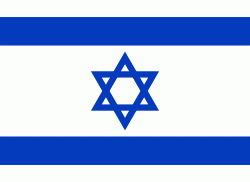Karmiel (Karmi’el)
 |
In 1956, about 1275 acre of land in the area that is now Karmiel, owned by residents of the nearby Israeli Arab villages of Deir al-Asad, Bi'ina and Nahf, were declared "closed areas" by Israeli authorities. This area, near the main road between Acre and Safed, had been an important marble quarrying site. In 1961, the Israeli authorities expropriated the land to build Karmiel. The villagers offered "equally good land" in the area, but when Moshe Sneh (Maki) and Yusef Khamis (Mapam) brought the case to the Knesset on behalf of the villagers, the Knesset established that there was no such land. According to the Haredi newspaper She'arim, about 10 km2 (394 lots) were confiscated by a court order on 4 March 1963, at the request of the Israel Development Authority. However, the land was rocky, uninhabited and unfit for agriculture. In 1964, when local Arabs applied for permission to move into the town, Minister of Housing Yosef Almogi replied that "Karmiel was not built to solve the problems for the people in the surrounding area." In February 1965, 400 protesters marched from Tel Aviv to protest against "discrimination of a group of our citizens". Representatives went to a local police station, informing the police that they were staying in the area without permission. Eventually, the perceived leaders were arrested and tried before a military tribunal.
Karmiel was one of the first cities in Israel to be established according to an urban master plan. It was built as part of the Central Galilee Development Project. Work began in 1963, and the official inauguration ceremony took place in October 1964. The first 16 families moved in at that time. A tender for the construction of Karmiel's main roads was issued in 1963, and Mekorot built a water pipe network connecting Karmiel, Rameh, Sha'ab and other nearby villages. In 1972, Karmiel was granted development town status, which bolstered its growth due to government-provided economic incentives to attract young couples.
In 1981, Karmiel was awarded the Beautiful Israel prize and the Kaplan Prize for Management and Services. Karmiel achieved city status on November 20, 1986. The first mayor was Baruch Venger, followed by Adi Eldar, who has remained in this position until Moshe Kuninsky took his place in 2018.
18,000 new immigrants settled in Karmiel between 1990 and 2002. And in the 2000s, some SLA families were resettled in Karmiel following the Israeli withdrawal from South Lebanon.
During the Second Lebanon War in 2006, Hezbollah fired 180 Katyusha rockets into Karmiel and the neighboring villages, leading to casualties and damage to buildings, roads, and cars.
Map - Karmiel (Karmi’el)
Map
Country - Israel
 |
 |
| Flag of Israel | |
The Southern Levant, of which modern Israel forms a part, is on the land corridor used by hominins to emerge from Africa and has some of the first signs of human habitation. In ancient history, it was where Canaanite and later Israelite civilizations developed, and where the kingdoms of Israel and Judah emerged, before falling, respectively, to the Neo-Assyrian Empire and Neo-Babylonian Empire. During the classical era, the region was ruled by the Achaemenid, Macedonian, Ptolemaic and Seleucid empires. The Maccabean Revolt gave rise to the Hasmonean kingdom, before the Roman Republic took control a century later. The subsequent Jewish–Roman wars resulted in widespread destruction and displacement across Judea. Under Byzantine rule, Christians replaced Jews as the majority. From the 7th century, Muslim rule was established under the Rashidun, Umayyad, Abbasid and Fatimid caliphates. In the 11th century, the First Crusade asserted European Christian rule under the Crusader states. For the next two centuries, the region saw continuous wars between the Crusaders and the Ayyubids, ending when the Crusaders lost their last territorial possessions to the Mamluk Sultanate, which ceded the territory to the Ottoman Empire at the onset of the 16th century.
Currency / Language
| ISO | Currency | Symbol | Significant figures |
|---|---|---|---|
| ILS | Israeli new shekel | ₪ | 2 |
| ISO | Language |
|---|---|
| AR | Arabic language |
| EN | English language |
| HE | Hebrew language |















